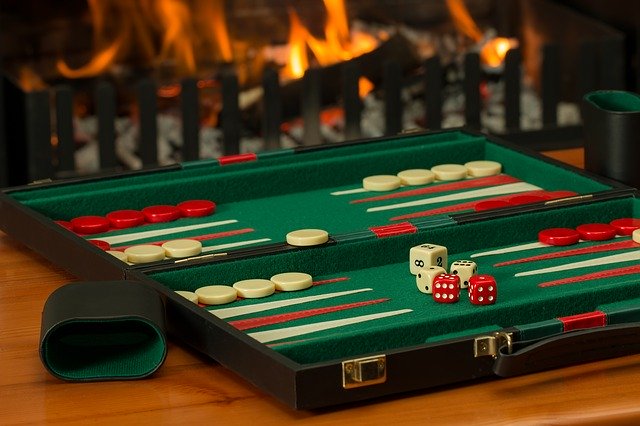Are you familiar with the game called backgammon? Well, backgammon is one of the oldest games for 2 players that have existed for more than 5,000 years.
The Setup
The game can be played on a board that consists of 24 narrow triangles, which is called points. The triangles are colored alternatively and then grouped in 4 quadrants of 6 triangles each.
These quadrants are known as the home board and the outer board of the player and his/her opponent. The home and outer boards are divided from each other through a ridge down the bar or the middle of the board.
Get the backgammon set on amazon.co.uk or amazon.com
The points are then numbered for each player starting from the home board of the player. The outermost point is the 24 point, which is also the one point of the opponent.
This also gives each player 24 points, 5 on each player’s 13 points, 3 on the player’s 8 points, and 5 on each 6 points of the player. Both of the players will have their own pair of dice in which a dice cup will be used for checking.
The current stake of the game will be kept track with a doubling cube having the numbers 2, 4, 8, 16, 32, and 64.
Object Of The Game
In order to win, you have to the first to bear off all of your checkers. This is because the object of the game is to move all your checkers into your own home board before bearing them off.
Checkers Movement
A single dice must be thrown by each player in order to start the game. This will determine who will be the one to go first as well as the numbers to be played.
In case if both draw the same numbers, they will have to draw again until they get different numbers. The one throwing the bigger number will move his checkers based on the numbers showing on both dice.
The 2 players will throw 2 dices and alternate turns after the first roll. The roll of the dice will determine how many points the player is to move his checkers.
The checkers are moved forward always to a lower-numbered point. Thus, the following rules will apply.
- A checker may only be moved to an open point, where it is not occupied by 2 or more opposing checkers.
- The numbers of the 2 dices will get separate moves. For instance, if a player rolls 5 and 3, he may move one checker 5 spaces to an open point.
Another checker will be moved 3 spaces to an open point. He may also move the 1 checker a total of 8 spaces to an open point, but only when the intermediate point is also open.
- The player who rolls doubles will play the numbers displayed on the dice twice. The player will have 4 sixes to use if the roll shows 6 and 6. He/she may also move any combination of checkers that seems to be appropriate to complete the requirement.
- A player should use both numbers of a roll only if legally possible or all 4 numbers of a double. This means that when a number can be played, he/she must play that number.
If either number can be played, the player should play the larger one. But if he/she can’t use the number, it will cause him/her to lose a turn.
Alternatively, if in case of doubles, the player must play as many numbers as possible, considering the 4 numbers are not playable.
Hitting and Entering
A blot is a point occupied by a single checker of either color. When an opponent lands on a blot, the blot is hit and will be placed on the bar.
Each time a player has one or more checkers on the bar, he/she must enter those checkers into the opposing home board.
The checker is entered by moving it into an open point that corresponds to 1 of the numbers on the dice rolled.
Bearing Off
The bearing off will commence once a player has already moved all of his 15 checkers into his home board.
The player will bear off a checker by rolling a number corresponding to the point on which the checkers are, which then be removed from the board.
Doubling
A player who thinks that he/she has enough advantage can propose the doubling of stakes. This can be possible at the start of his/her turn and before he/she has rolled the dice.
Get the backgammon set on amazon.com or amazon.co.uk
Featured image credit: Ptkfgs [Public domain]
